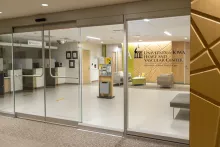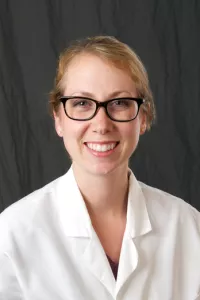Esophagus
- For Cardiothoracic Surgery related requests:
- 1-319-356-7102
- For Gastroenterology related requests:
- 1-319-356-4901
We offer many minimally invasive surgery options, both with and without the Da Vinci robot.
Esophageal Conditions Treated
- Achalasia and esophageal motility disorders
- Diaphragmatic hernia
- Esophageal cancer
- Esophageal carcinomas and begin esophageal tumors
- Esophageal strictures, perforations, and diverticulum
- GERD
- Paraesophageal hiatal hernia
Motility Disorders
Esophageal motor disorders include the failure of the esophagus to relax or spasm, such as achalasia, a condition which causes problems with swallowing food. When food arrives at the end of the esophagus, the muscular valve known as the lower esophageal sphincter (LES) fails to relax to allow food into the stomach. To treat achalasia, muscle must be cut to prevent it from blocking the passage of food. This procedure which can be performed through a large incision or through several small incisions using laparoscopic instruments, is called a Heller Myotomy. Our surgeons offer both robotic and laparoscopic procedures which reduce recovery time significantly.
Esophageal Treatments
- Esophageal duplication cysts are growths in the esophagus
- Minimally invasive (laparoscopic) surgery can be performed to remove the cysts
- Esophagectomy is the removal of all or part of the esophagus where cancer is present
- After the esophagus, or part of it, is removed, the esophagus is rebuilt from part of the stomach or large intestine
- In open surgery, one or more large incisions are made in the belly, chest, or neck
- In laparoscopic (minimally invasive) surgery, several small incisions are made in the belly, chest, or neck. A thin tube and tiny camera (laparoscope) and surgical tools are inserted into the incisions to perform the surgery
- Length of stay is about one week and the UI complications rates are extremely low due to our surgical expertise and team approach.
- Esophageal perforation is a hole in the esophagus
- A perforation in the upper part of the esophagus near the neck may heal on its own
- Surgery is typically needed to repair a perforation in the middle or lower part of the esophagus
- Esophageal stricture (narrowing the esophagus) causes problems with swallowing
- Treatment involves dilation (opening) of the esophagus using a balloon dilator passed through an endoscope (a flexible tube passed through the mouth)
- Treats acid reflux, also known as GERD (gastroesophageal reflux disease)
- GERD is when stomach acid comes back up from the stomach into the esophagus (the tube that runs from the mouth to the stomach)
- Fundoplication is the most common type of anti-reflux procedure. This involves wrapping part of the stomach around the end of the esophagus with stitches:
- Open surgery
- One large incision in the belly
- Laparoscopic (minimally invasive) surgery
- Three to five small incisions, with a thin tube and tiny camera (laparoscope) inserted into one of the incisions
- The camera is connected to a video monitor in the operating room
- Surgical tools are inserted into the other incisions
- The surgeon does the repair using the video monitor to view the inside of the belly
- Open surgery
- Achalasia is a disorder in which the esophagus cannot move food into the stomach. It occurs when a muscular ring where the esophagus and stomach meet (the esophageal sphincter) does not relax like it should during swallowing.
- A Heller myotomy is a laparoscopic (minimally invasive) procedure that involves cutting the affected muscles in the esophagus and stomach.
- Makes it easier for food to reach the stomach
- Uses an endoscope inserted into the esophagus
- A tiny blade passes through the endoscope, making a small slit in the lining of the esophagus
- To carefully divide the muscle that is restricting the passage of food to the stomach
- Occurs when part of the stomach pushes upward through the diaphragm into the chest
- Repair involves tightening the opening in the diaphragm with stitches to keep the stomach from pushing upward
In most cases, a less invasive approach is an option for patients with esophageal disease such as
- Barrett’s Esophagus
- Hiatal (abdominal) hernias
- Severe acid reflux, also called GERD
UI thoracic surgeons have the most experience in the state dealing with esophageal issues and are trained in a number of approaches, including a procedure to treat GERD called Laparascopic Nissen Fundoplication. Our surgical team even offers a surgery that doesn’t have an incision, called Transoral Incisionless Fundoplication (TIF), or Endoluminal Fundoplication. Several tests are indicated to help determine if surgery is required for this condition:
- 24 hour PH probe (off anti-reflux medications for 3 days before the test) to evaluate the extent of period of time reflux occurs
- Esophagram: Outline the anatomy of the esophagus
- Endoscopy with biopsies: Evaluate the inside tissue lining of the esophagus
- Esophageal Manometry: Assess for motility or muscle disorders in the esophagus
- Fluoroscopy
These videos will help you better understand:
- What you can expect before, during, and after your visit to UI Health Care
- Your health condition
- Your medicines
- Tests your care team orders
To view a video, enter the access code given to you by your care team. Then press “Enter.”
Our Care Team
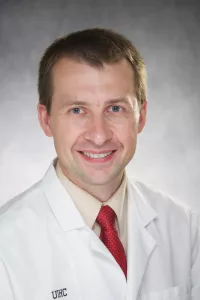
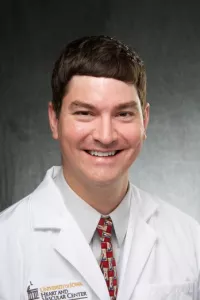
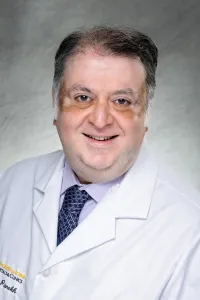
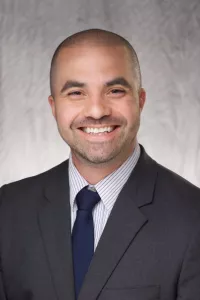
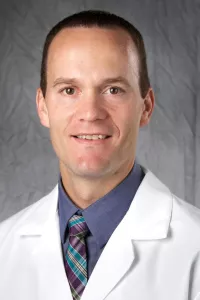
- Joan Ricks-McGillin, RN
- Kelley McLaughlin, RN
- Alicia Rock-Cleppe, RN, BSN
Not sure which Esophagus provider is right for you?
Locations and Offices
